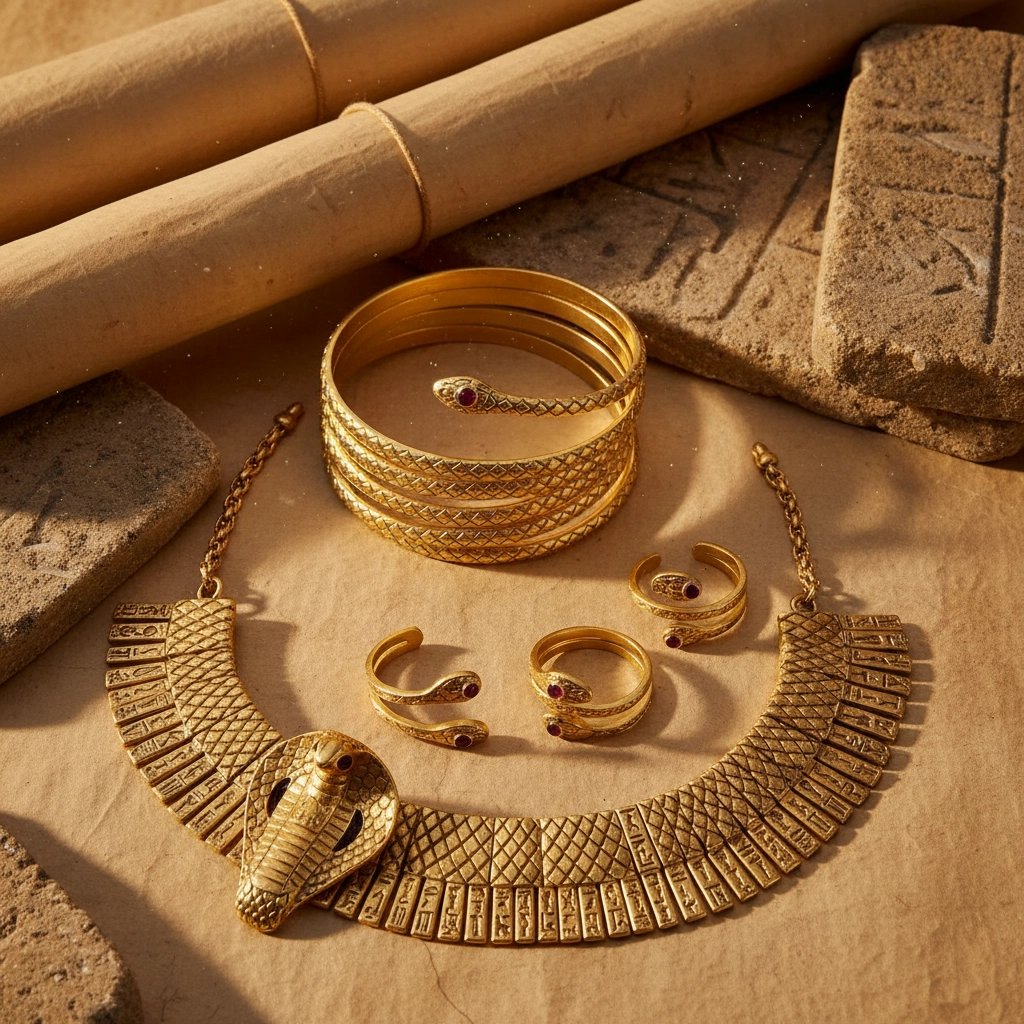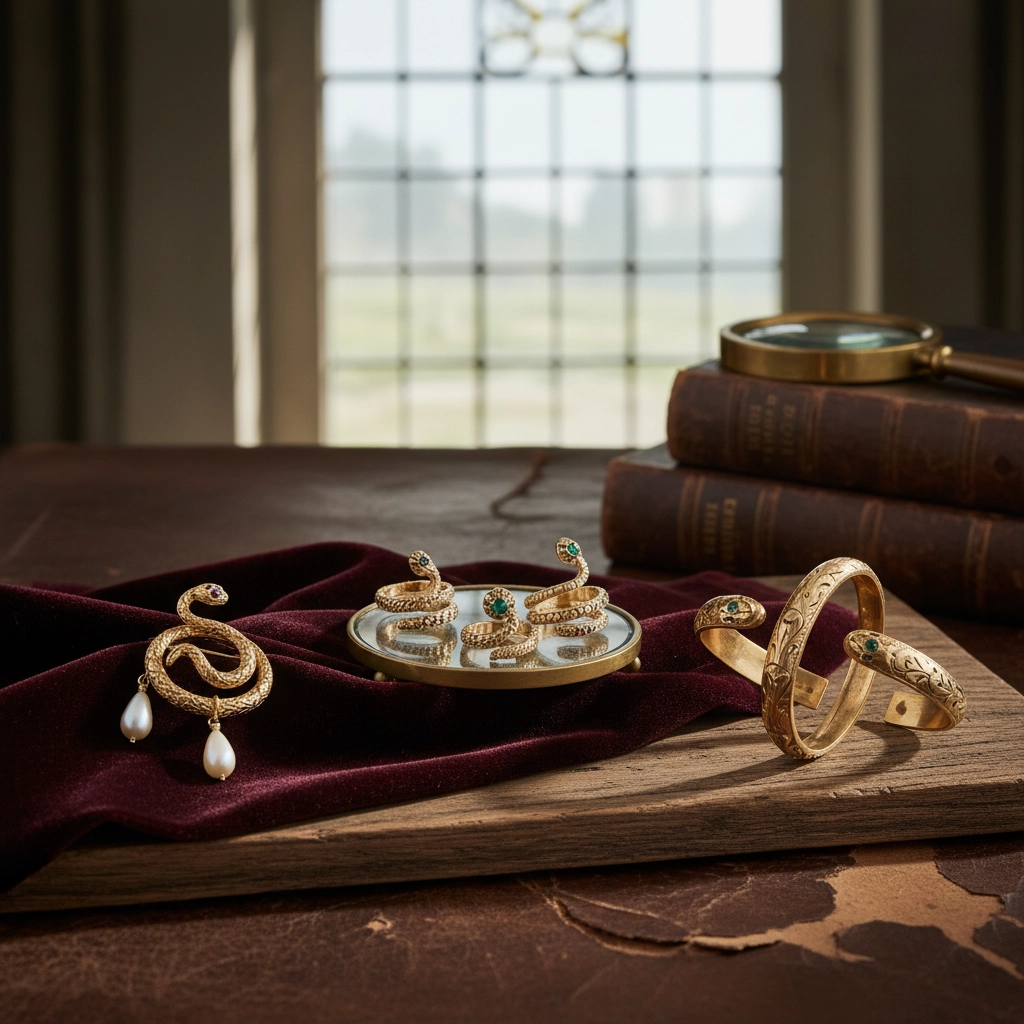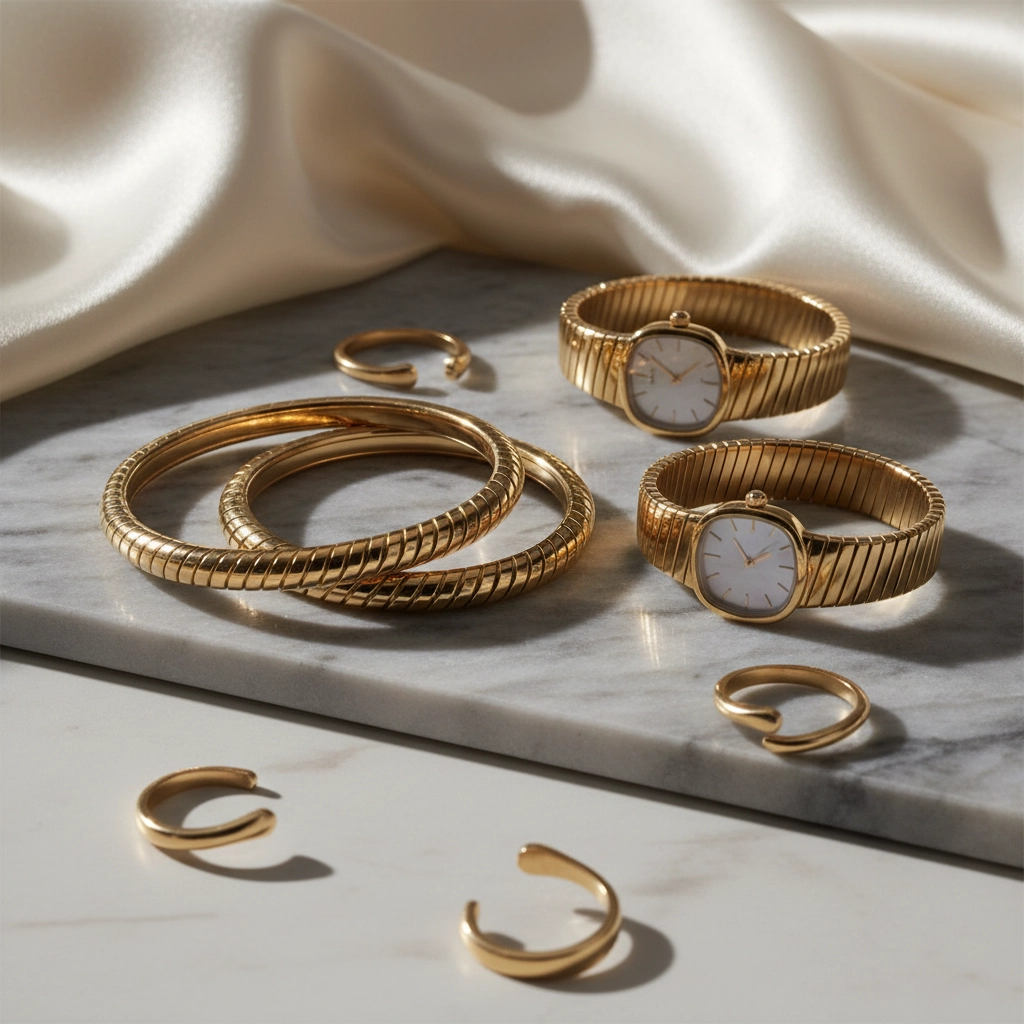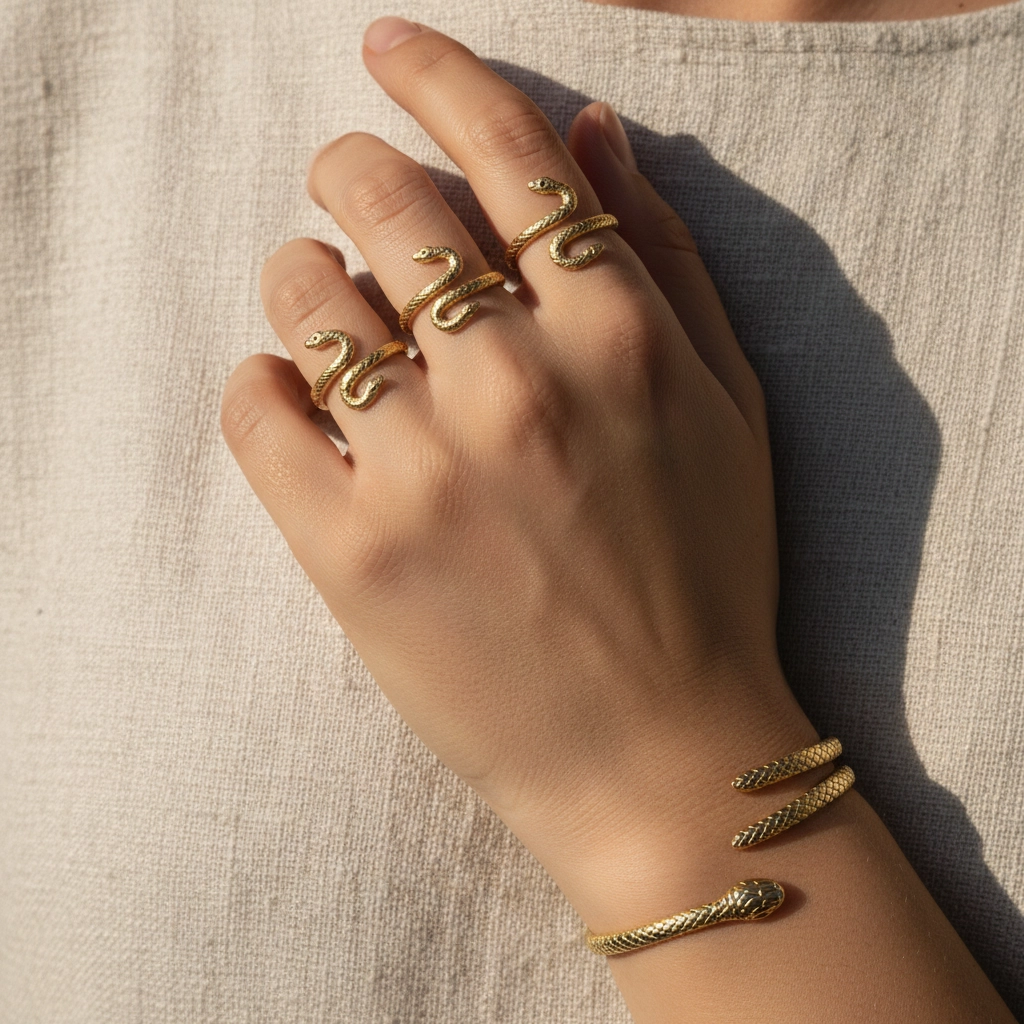Signature Saturdays: Serpent Jewelry's Secret History
Welcome back to Signature Saturdays! I'm so excited to continue this series where we'll dive deep into the iconic motifs, styles, and hallmarks that have shaped jewelry history. Each week, we'll uncover the untold stories, wild journeys, and hidden meanings behind the pieces that have captivated collectors for centuries.
And what better way to launch than with one of jewelry's most mysterious and controversial symbols: the serpent?
You've probably seen serpent jewelry: maybe you're even wearing a snake ring right now as you read this. But I bet you don't know the wild ride this motif has taken through history, from ancient power symbols to forbidden fruit, and back to modern luxury icons.
When Cleopatra Made Snakes Sexy
Let's start with the most famous snake jewelry wearer in history: Cleopatra. Picture this: it's ancient Egypt, and the most powerful woman in the Mediterranean is gliding through her palace wearing gold snake bracelets that spiral up her arms like living creatures. These weren't just accessories; they were statements of divine power and immortality.
The serpent's journey in jewelry actually begins even earlier, around the 8th century BC in Western Asia, but it was Egypt where the symbol really slithered into the spotlight. For the ancient Egyptians, snakes represented renewal and eternal life: pretty fitting for a queen who wanted to be remembered forever, right?
What fascinates me is how the serpent's natural form was perfect for jewelry design. Think about it: that sinuous, coiling shape could wrap around arms, necks, and fingers in ways that felt almost alive. Ancient artisans were basically creating the world's first "living" jewelry.

The Fall from Grace
But here's where the story takes a dark turn, literally. With the rise of Christianity, our slithering friend became public enemy number one. Suddenly, the symbol of wisdom and renewal was recast as the ultimate villain, the tempter in the Garden of Eden.
For over a thousand years, serpent jewelry practically disappeared from Western culture. Can you imagine? A motif that had reigned supreme for millennia was suddenly too scandalous to wear. It's like if someone declared diamonds evil tomorrow: the jewelry world would be turned upside down.
This wasn't just about religious symbolism; it was about power. The serpent represented ancient wisdom, feminine power, and pagan traditions that the new Christian order wanted to suppress. Wearing snake jewelry became an act of defiance: which, honestly, makes it even cooler in my book.
The Archaeological Awakening
Fast-forward to the 1750s, and something amazing happened. Archaeologists started digging up Pompeii and other ancient sites, uncovering incredible examples of serpent imagery everywhere: from massive public mosaics to tiny household shrines.
Suddenly, the educated elite of Europe were face-to-face with the sophisticated beauty of ancient serpent art. These weren't crude, evil symbols: they were elegant, powerful, and undeniably beautiful. The archaeological discoveries sparked what I call the "Great Serpent Revival."
By the Victorian era, snake jewelry was back with a vengeance. Queen Victoria herself received a serpent engagement ring from Prince Albert in 1839: talk about bringing a motif full circle! The Victorians ate it up, creating elaborate serpent rings, bracelets, and brooches that were both romantically meaningful and deliciously scandalous.

The Modern Serpent Renaissance
Now, let's talk about the piece de resistance of modern serpent jewelry: Bulgari's Serpenti collection. When I first encountered a vintage Serpenti watch, I was blown away. Here was a piece that captured everything I love about jewelry: artistry, innovation, and a healthy dose of rebellion.
Bulgari launched their serpent collection in the late 1940s, using a technique called Tubogas that created those iconic flexible, scale-like bands. But this wasn't just about copying ancient designs; it was about reinventing the serpent for the modern woman. These pieces had movement, attitude, and an unmistakable sense of luxury.
What I love about the Serpenti story is how it mirrors the snake's own symbolism of transformation and renewal. Just like a snake sheds its skin, the collection has continually evolved while keeping its core identity. From Elizabeth Taylor's famous Serpenti watch to today's cutting-edge designs, each iteration brings something new while honoring the ancient power of the symbol.

The Psychology of the Snake
Here's something that always gets me thinking: why are we so drawn to serpent jewelry? There's something primal about it that goes beyond fashion trends or historical significance.
I think it's because snakes represent everything we find both terrifying and fascinating about transformation. They shed their skin and emerge renewed: something we all long to do at different points in our lives. When you wear serpent jewelry, you're not just wearing a pretty design; you're carrying a symbol of your own potential for change and growth.
Have you ever noticed how serpent jewelry makes you feel? There's often something bold, almost defiant about choosing to wear it. It's like making a statement that you're not afraid of your own power, your own capacity for transformation.
The Secret Meanings We Still Carry
Today's serpent jewelry enthusiasts might not consciously think about ancient Egyptian mythology, but we're still drawn to the same core meanings that captivated Cleopatra. Protection, wisdom, renewal, sensuality: these aren't just historical concepts; they're deeply human desires that transcend time and culture.
I've had customers tell me that their serpent ring helps them feel stronger during difficult times, or that their snake bracelet reminds them of their ability to reinvent themselves. That's the real magic of this motif: it connects us to something larger than ourselves.

Spotting Authentic Serpent Pieces
If you're interested in adding serpent jewelry to your collection, here are a few things I always look for. First, pay attention to the craftsmanship of the scales: authentic vintage pieces often have incredible detail that shows the maker's skill. The eyes are crucial too; many fine pieces feature genuine gemstones that bring the serpent to life.
For modern pieces, look for that perfect balance between realistic detail and artistic interpretation. The best serpent jewelry doesn't just look like a snake; it captures the essence of what the serpent represents.
Looking Ahead
As we wrap up our Signature Saturday, I'm excited about what's coming next in this series. We'll explore everything from ancient signet rings to Art Deco fan motifs, each with their own secret histories and hidden meanings.
But for now, take a moment to appreciate the incredible journey of serpent jewelry. From Cleopatra's golden bracelets to today's luxury collections, this motif has survived religious persecution, cultural shifts, and changing fashions. That kind of staying power tells us something important: some symbols are just too powerful to disappear.
What serpent pieces have caught your eye? Are you team ancient mysticism or modern luxury? Let the symbol speak to you: after all, it's been whispering secrets for nearly three thousand years.
Next Saturday, we'll uncover the hidden world of signet rings and the secret codes carved into their surfaces. Trust me, you won't want to miss it.
Cheers,
Peter